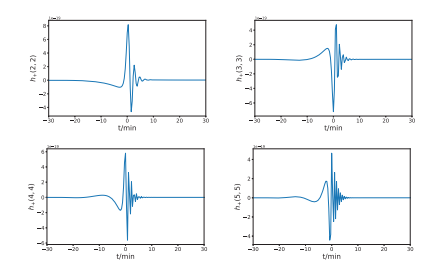Abstract
Two recent papers (by Amaro-Seoane and Gourgoulhon and co-workers) revealed that in our Galaxy there are very extreme mass-ratio inspirals composed of brown dwarfs and a supermassive black hole at the centre of the Galaxy. The event rates estimated in these papers are very considerable for future space-borne detectors. In addition, there are plunge events during the formation of inspiralling orbits. In this work, we calculate the gravitational waves from compact objects (brown dwarfs, primordial black holes, etc.) plunging into or being scattered by the central supermassive black hole. We find that for space-borne detectors the signal-to-noise ratios of these bursts are quite high. The event rates are estimated as ∼ 0.01 yr–1 for the Galaxy. If we are lucky, this kind of very extreme mass-ratio burst will offer a unique chance to reveal the nearest supermassive black hole and nuclei dynamics. The event rate could be as large as 4∼8 yr–1 within 10 Mpc, and because the signal is strong enough for observations by space-borne detectors, we have a good chance of being able to probe the nature of neighbouring black holes.
 |  |  |  |
DOI: 10.1093/mnrasl/slaa115





